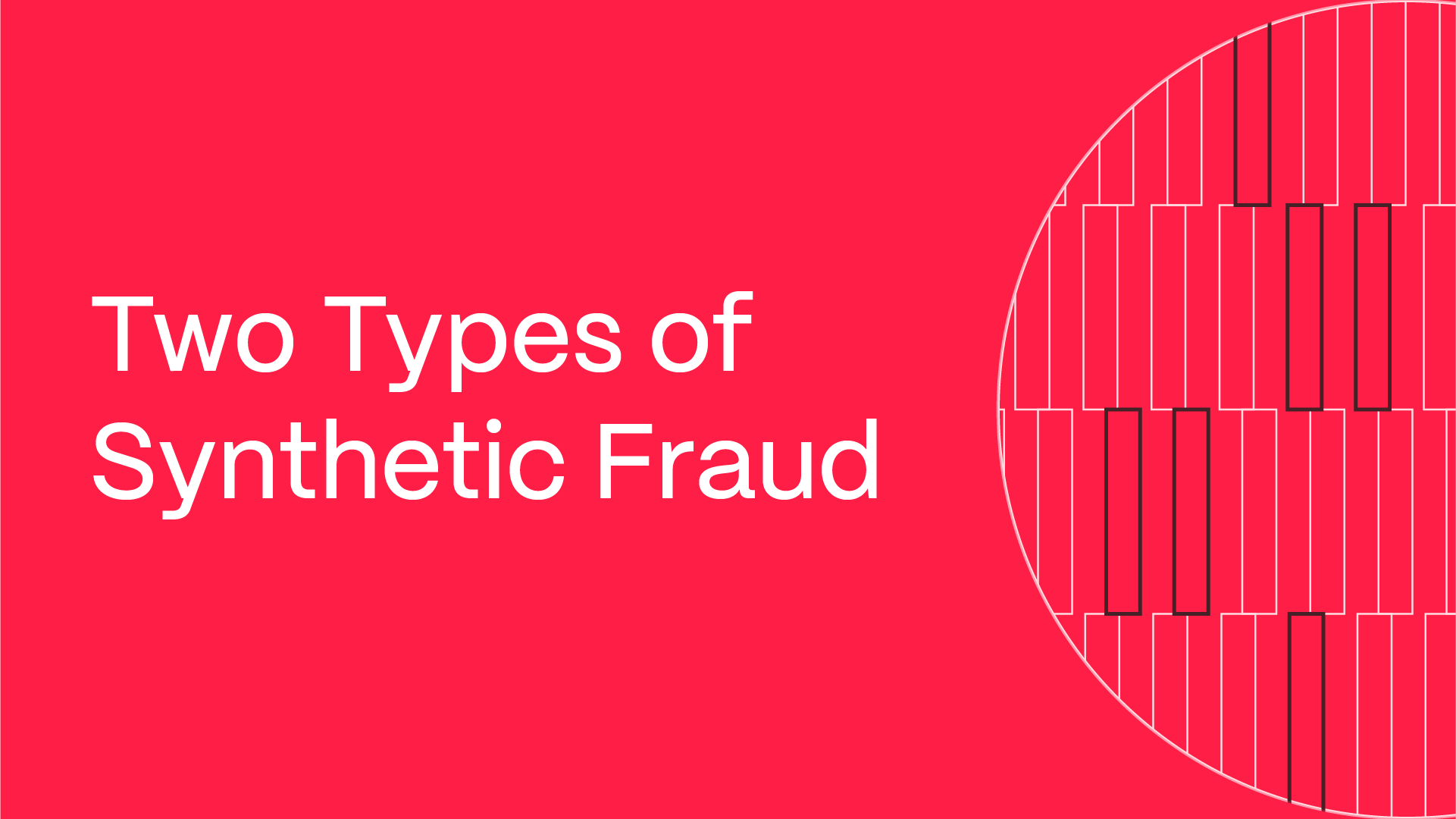Blog post
Two Types of Synthetic Fraud
SentiLink
Published
December 24, 2020

While industry and government groups continue to work to define synthetic fraud, one thing is clear — there are two types of synthetic fraud. SentiLink refers to these two types as First Party Synthetic or Third Party Synthetic. The Federal Reserve refers to them as Manipulated or Fabricated identities. We’ve also heard them described as Hybrid or Full identities.
Regardless of the labels applied, the description of each is the same:
First Party Synthetic or Manipulated Identities
Definition: Individuals who use their true name and date of birth, but a Social Security number that doesn’t belong to them.
Technically, these consumers are manipulating their own identities to obfuscate prior derogatory credit history that might limit their ability to obtain credit, or secure credit at favorable terms. While some consumers knowingly manipulate their identities, others fall prey to disreputable credit repair agencies who encourage them to use a CPN (e.g. Credit Privacy Number) or similar nine digit number instead of their true Social Security number.
Third Party Synthetic or Fabricated Identities
Definition: Individuals who completely fabricate their identity; they use a name, date of birth and Social Security number combination that doesn’t belong to a real consumer.
This type of fraud is often associated with organized crime.
The Federal Reserve has put a lot of effort into defining synthetic fraud and sharing their insight with the industry. They wrote three white papers on synthetic fraud and recently assembled a working group to further refine their understanding of this type of fraud and work towards a toolkit financial institutions can use to defend against synthetic fraud.
Here at SentiLink, we recently released a white paper titled “Defining Synthetic Fraud” in which we outline a detailed taxonomy of synthetic and ancillary types of fraud, honed by SentiLink’s Fraud Analysts over the last several years. The goal of our white paper was to help create discussion to support the Fed’s efforts to develop a standard industry definition that could be adopted by all industries.
Whether a case of synthetic fraud is referred to as First Party Synthetic or Manipulated; Third Party Synthetic or Fabricated, SentiLink’s goal is to work together to identify and stop synthetic fraud.
Related Content

Blog article
December 2, 2025
The Identity-Theft Risk Profile of NBA and NFL Draft Prospects
Read article
Blog article
November 21, 2025
CIP Requirements: What Financial Institutions Need to Know
Read article
Blog article
November 7, 2025